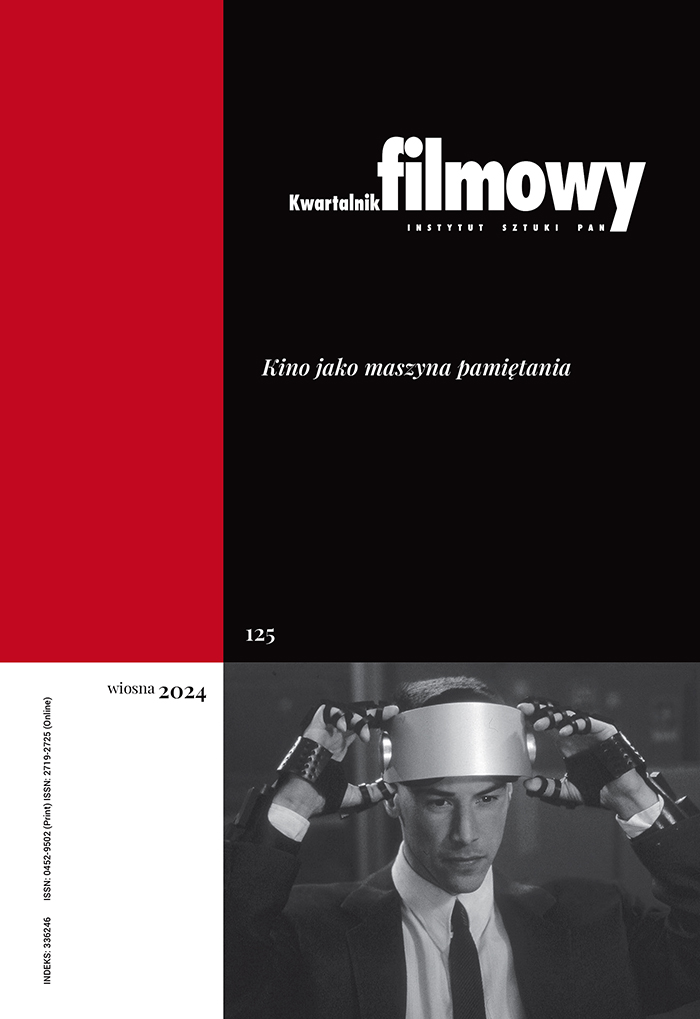Kevin Smith and His X-World
Abstract
Pitrus describes the world presented in films of Kevin Smith - the director often called the king of Generation X. Pitrus notes that Smith's master and inspiration was Richard Linklater, the author of the famous film Slacker (1991). However, in contrast to Linklater, who searched for other themes, Smith consequently observes and shows the life of his contemporaries and peers. Following the analysis of storylines and themes present in films, Pitrus concludes that among American independent directors Kevin Smith most consequently refers to somewhat forgotten strategy of “bad taste”. Smith looks for means which would help him to carry out a radical deconstruction of pop culture. He not only reaches for tamed matrix of dominant culture which he fills with surprising meaning, but in a methodical way shocks with vulgarity and humour.
Keywords:
Kevin Smith, Richard Linklater, obscenityReferences
Brzozowska Blanka, Gen X. Pokolenie konsumentów, Rabid, Kraków 2005, s. 12, 22-23, 34-35.
Google Scholar
Levy Emanuel, Cinema of Outsiders. The Rise of American Independent Film, New York University Press, New York – London 1999, s. 208.
Google Scholar
Szyłak Jerzy, Komiks: świat przerysowany, słowo/obraz terytoria, Gdańsk 1998, s. 22-23, 40.
Google Scholar
Authors
Andrzej Pitruskwartalnik.filmowy@ispan.pl
Jagiellonian University Poland
Pracownik naukowy Instytutu Sztuk Audiowizualnych UJ. Autor książek Nam niebo pozwoli. O filmowej i telewizyjnej twórczości Todda Haynesa (2004), Filmowcy i kiniarze (2004), Dotykając lustra. Melodramaty Douglasa Sirka (2006). Znawca problematyki kina niezależnego.
Statistics
Abstract views: 624PDF downloads: 148
License
Copyright (c) 2009 Andrzej Pitrus

This work is licensed under a Creative Commons Attribution 4.0 International License.
The author grants the publisher a royalty-free non-exclusive licence (CC BY 4.0) to use the article in Kwartalnik Filmowy, retains full copyright, and agrees to identify the work as first having been published in Kwartalnik Filmowy should it be published or used again (download licence agreement). The journal is published under the CC BY 4.0 licence. By submitting an article, the author agrees to make it available under this licence.
In issues from 105-106 (2019) to 119 (2022) all articles were published under the CC BY-NC-ND 4.0 licence. During this period the authors granted a royalty-free non-exclusive licence (CC BY-ND 4.0) to use their article in „Kwartalnik Filmowy”, retained full copyright, and agreed to identify the work as first having been published in our journal should it be published or used again.
Most read articles by the same author(s)
- Andrzej Pitrus, Mum Naked: The Naked Body of a Mother in Contemporary Visual Art , Kwartalnik Filmowy: No. 83-84 (2013): Body in Film
- Andrzej Pitrus, Chris Marker’s Travels in Time: The Curious Fate of “La Jetée” , Kwartalnik Filmowy: No. 89-90 (2015): Redefinitions of the Classics
- Andrzej Pitrus, An Essay Devoid of a Title, About a Journey Home, Which Home Does Not Exist and Perhaps Never Will Be, or to a Home Which Once Belonged to Entirely Someone Else , Kwartalnik Filmowy: No. 107 (2019): Journey, (E)migration, Pilgrimage
- Andrzej Pitrus, An Essay Devoid of a Title, About a Country that Turned its Back on its Children , Kwartalnik Filmowy: No. 105-106 (2019): Cinema and Political Transformation
- Andrzej Pitrus, It is Us Who Invented Time: “Ocean Without a Shore” and “Transfigurations” by Bill Viola , Kwartalnik Filmowy: No. 86 (2014): Dimensions of Time
- Andrzej Pitrus, The Closed Spaces of Bill Viola , Kwartalnik Filmowy: No. 79 (2012): Interiors: On Cinematic Enclosed Space
- Andrzej Pitrus, Cinema Without Secrets , Kwartalnik Filmowy: No. 75-76 (2011): Faces of Reality
- Andrzej Pitrus, Reckoning With German Cinema , Kwartalnik Filmowy: No. 80 (2012): Film at the Meeting Point of Cultures
- Andrzej Pitrus, Known and Unknown Forms , Kwartalnik Filmowy: No. 87-88 (2014): Film and Theatre
- Andrzej Pitrus, Eye to Eye With the Animal: “I Do Not Know What It Is I Am Like” and Intercultural Negotiations of Bill Viola , Kwartalnik Filmowy: No. 80 (2012): Film at the Meeting Point of Cultures











